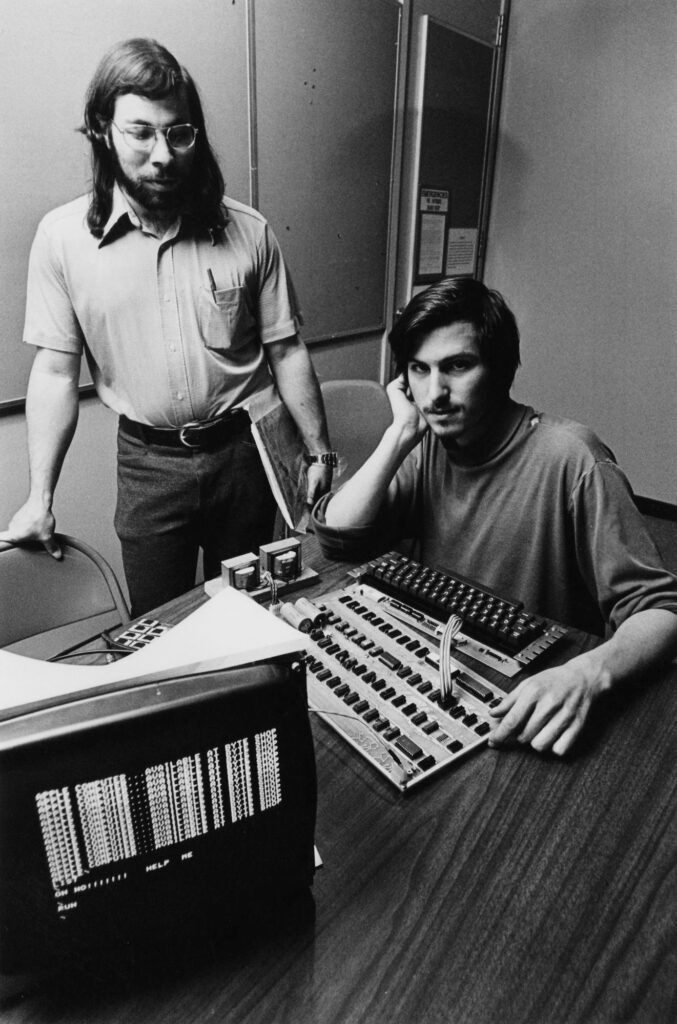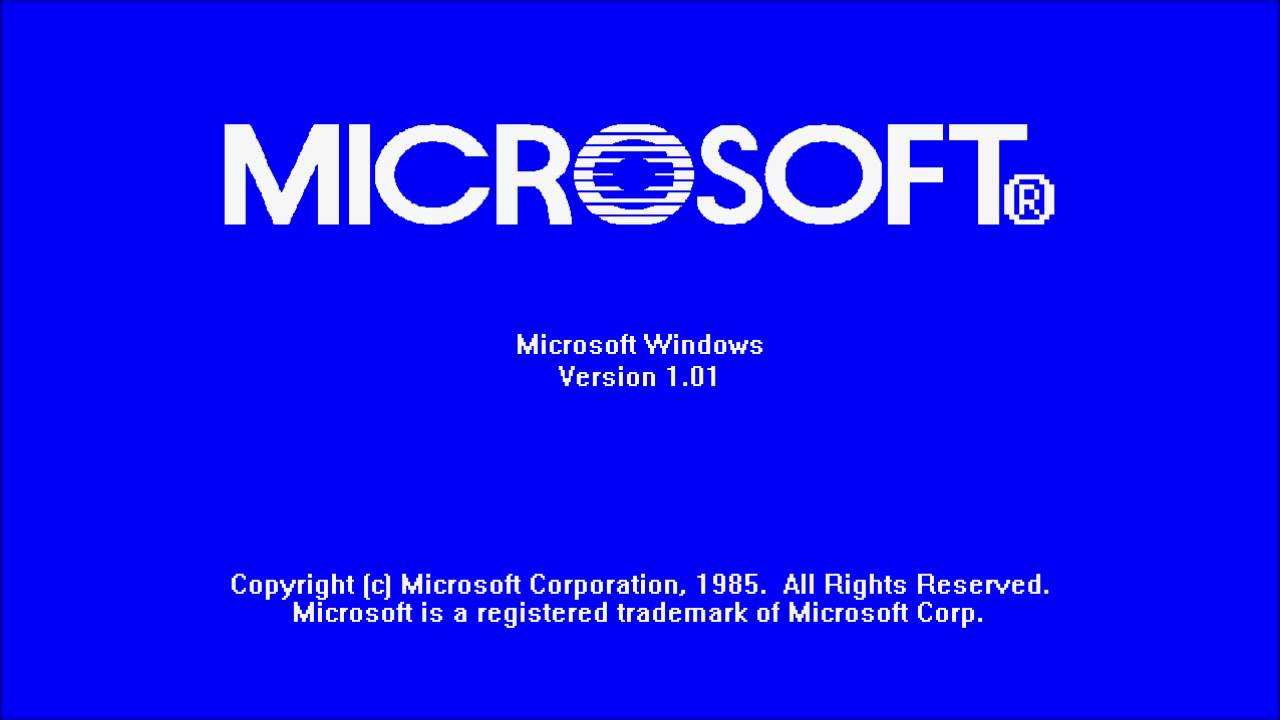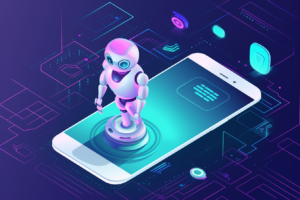Apple: The Company that Revolutionized the World of Computing
As you may know, Apple is one of the most famous and influential companies in the world, a leader in the electronics, computing, and technology sectors. But how did this company, which has changed the way millions of people communicate, work, and entertain themselves, come into being? Let’s find out together in this article.
The Beginnings: The Dream of Two Friends Passionate About Electronics
Apple‘s story begins in the mid-1970s in California, where two young men named Steve, both electronics enthusiasts, lived: dell’elettronica: Jobs and Wozniak. The latter always stood out for his intellect and competence in the field, to the extent that he began thinking of building an affordable and accessible computer. However, he was hindered by the cost of the equipment needed for this project, so he started drafting it on paper.
Fortunately, not long after, CPU prices dropped, and Wozniak could buy one, finally starting the design of a so-called BASIC language and a complete computer.

In those months, when the project was almost finished, Wozniak met his old friend Steve Jobs at a conference. Jobs had left his studies to pursue the American dream of becoming a “self-made man”.
Jobs immediately showed great interest in his friend’s innovative project, so they decided to partner up, combining his natural business acumen with Wozniak’s remarkable engineering skills. After completing the Apple I project and securing an order to assemble and sell 50 units, they brought in Ronald Wayne, founding Apple Computer Inc. on April 1, 1976. This was followed by a significant $250,000 investment from Mike Markkula who recognized the enormous potential of these electronic calculators.
Success: The Era of Personal Computers and the Macintosh
In a short time, the trio developed the Apple II, a completely revolutionary computer that marked the beginning of the personal computer era and achieved enormous success. The Apple II featured color graphics, an integrated keyboard, expandable memory, and various ports to connect peripherals like printers, modems, and joysticks. Additionally, it was compatible with a wide range of software, including games, educational applications, and productivity tools. The Apple II was the first computer to enter millions of homes, schools, and offices, creating a true cultural revolution.
Despite the unfortunate outcomes of new projects like the Apple Lisa and Apple III and the departure of Wayne and Wozniak in 1984, the company launched a project destined to secure its success: the Apple Macintosh. The first Mac, with its affordability and technical features, revolutionized the concept of “computing for everyone,” as it could be used on both office desks and home tables. The Macintosh featured an intuitive and user-friendly graphical interface based on the use of a mouse and icons, making interaction with the computer simple and fun.
Challenges: Competition, Crises, and Jobs’ Return
Despite the success of the Macintosh, Apple faced several challenges and difficulties in the following years. The main one was the fierce competition from Microsoft, which launched the Windows operating system in 1985. Windows borrowed many features from the Mac’s graphical interface but at a lower price and on an open, standardized platform.

This led to a loss of market share for Apple, which had to compete with numerous Windows-compatible PC clones. Additionally, Apple faced several internal issues, including power struggles, leadership changes, layoffs, and restructurings. In 1985, Jobs was forced to leave the company he founded following a clash with CEO John Sculley, and founded a new company called NeXT, dedicated to developing high-performance computers.
Apple continued to produce new Macintosh models, introducing innovations like the first portable computer (Macintosh Portable), the first computer with a color display (Macintosh II), the first computer with a CD-ROM drive (Macintosh LC), and the first computer with a PowerPC processor (Power Macintosh). However, these products could not counter Windows’ dominance in the personal computer market, and Apple found itself in a financial crisis and with a poor reputation.
In 1996, the company decided to bring Jobs back, purchasing his company NeXT and appointing him as a consultant. With his vision and charisma, Jobs managed to save Apple from bankruptcy, restoring its success and glory. His first move was to form an alliance with Microsoft, which invested $150 million in Apple and committed to developing versions of Office and Internet Explorer for Mac. The second move was to launch a new line of Macintosh computers called iMac, which stood out for its innovative design, translucent color, and lack of a floppy disk drive. The iMac was a sales and critical success, marking the beginning of a new era for Apple.
The Renaissance: The Era of the iPod, iPhone, and iPad
After reviving the Macintosh, Jobs focused on expanding Apple’s market into new sectors, aiming at the convergence of computing, electronics, and entertainment.
In 2001, Apple launched its first portable device, the iPod, a digital music player that allowed users to store and listen to thousands of songs in MP3 format. The iPod was a global success, changing how music was consumed and creating a new business model based on the iTunes online store, where music, videos, and podcasts could be legally purchased and downloaded. The iPod was followed by several variants, including the iPod mini, iPod nano, iPod shuffle, and iPod touch.
In 2007, Apple entered the mobile phone market by launching its first smartphone, the iPhone. The iPhone was a revolutionary device combining the functions of a mobile phone, an iPod, and a handheld computer. It featured a multi-touch touchscreen, allowing users to control the device with their fingers, and an operating system called iOS, which offered various integrated applications and the ability to download new ones from the App Store, an online platform. The iPhone was an unprecedented success, setting a new standard in the smartphone industry.
In 2010, Apple entered the tablet market by launching its first device of this kind, the iPad. The iPad was a touchscreen device that allowed users to browse the web, read e-books, watch videos, play games, and use various applications. The iPad stood out for its elegant design, long battery life, fast processor, and iOS, operating system, the same as the iPhone. The iPad was another Apple success, creating a new product category and stimulating competition from other tablet manufacturers.
The Present: The Post-Jobs Era and New Challenges
In 2011, Apple faced the loss of its founder and charismatic leader, Steve Jobs, who died of pancreatic cancer. Jobs was succeeded by Tim Cook, who had been his right-hand man and the company’s chief operating officer. Cook has continued to lead Apple according to Jobs’ vision and values, maintaining a focus on innovation, quality, and design.
Under his leadership, Apple has launched new products and services, including the Apple Watch, the company’s first smartwatch, the Apple TV, a device for streaming multimedia content, Apple Music, a music streaming service, Apple Pay, a mobile payment system, and Apple Arcade, a video game subscription service. Additionally, Apple has continued to renew and improve its historical products, such as the Mac, iPhone, and iPad, introducing new features, performances, and designs.
Today, Apple is one of the richest and most powerful companies in the world, with a market value of over $2 trillion and a loyal customer and fan base. However, Apple must also face new challenges and threats, such as increasing competition from other tech giants like Google, Amazon, Facebook and Microsoft, the saturation and maturity of the smartphone market, legal and regulatory pressures from governments and consumer rights organizations, and the need to meet the expectations of a society increasingly aware and sensitive to environmental, privacy, and ethical issues.
Apple will have to demonstrate its ability to innovate and surprise, remaining true to its mission of “making the best products in the world that enrich people’s lives.”
The Future: The Era of Augmented Reality, Artificial Intelligence, and Health
Apple never stops innovating and seeking new market opportunities, focusing on emerging technologies and growing sectors. Among Apple’s areas of interest are augmented reality, artificial intelligence, and health.
Augmented reality is a technology that overlays digital elements on the physical reality, creating immersive and interactive experiences. Apple has introduced augmented reality support in its iOS devices through the ARKit framework, allowing developers to create augmented reality applications for iPhone and iPad.
Additionally, Apple is working on an augmented reality glasses project, rumored to be launched soon. Apple’s glasses could project images and information into the user’s field of view, integrating with the iPhone and Siri, Apple’s voice assistant.
Artificial intelligence is a technology that enables machines to learn, reason, and interact intelligently. Apple has heavily invested in artificial intelligence, both to improve its products and services and to create new solutions. Apple’s AI applications include Siri, which offers voice and conversational assistance, Face ID, which allows unlocking the device with facial recognition, and AirPods, which adapt to ambient sound and user movement. Additionally, Apple has created the Neural Engine,
a chip dedicated to artificial intelligence, integrated into the A12 and A13 processors of the latest devices.
Health is a sector that concerns the physical and mental well-being of people and offers great growth opportunities and social impact. Apple has shown a strong focus on health, both for its employees and customers, offering products and services that promote a healthy and active lifestyle. Among Apple’s health-focused products are the Apple Watch, which monitors heart rate, physical activity, sleep, and electrocardiograms, and the iPhone, which hosts the Health app, collecting and analyzing user health data.
Among Apple’s health-focused services are Apple Fitness+, which offers personalized workout videos synchronized with the Apple Watch, and Apple Health Records, which allows secure and private access to and sharing of medical records.
Apple is a company that has made history in computing and technology and continues to amaze and inspire the world with its innovations and vision.
The Future: The Era of Innovation and Sustainability
Apple never stops innovating and anticipating its customers’ needs and desires. Among the projects and products the company is developing or has already launched are:
- Apple Car, an electric and autonomous car expected to be ready by 2024, promising to revolutionize the transportation sector with its advanced technology and attractive design.
- Apple Glass, a pair of smart glasses that will display augmented reality information and content, integrating with the iPhone and other Apple devices.
- Apple Silicon, a new generation of processors designed by Apple and based on ARM architecture, offering superior performance, greater energy efficiency, and compatibility with iOS and iPadOS applications.
- Apple One, a subscription service that includes all of Apple’s services, such as iCloud, Apple Music, Apple TV+, Apple Arcade, Apple News+, Apple Fitness+, and Apple Card, at an advantageous price and with a single invoice.
Most Popular:
Most Recent:
Beyond Innovation: Apple’s Commitment to Responsibility and Sustainability
In addition to innovating, Apple is also committed to being a responsible and sustainable company, respecting the environment, human rights, and the privacy of its users. Among the initiatives and actions the company has undertaken or planned are:
- Achieving carbon neutrality by 2030, reducing greenhouse gas emissions and using renewable energy to power its operations, products, and supply chain.
- Recycling and reusing materials from its products through the Apple Trade In program and the Daisy robot, which disassembles and recovers components from used iPhones.
- Protecting the privacy and security of its users through encryption, data minimization, and control over the information shared with third-party applications and services.
- Supporting various social causes such as education, health, equality, and justice through donations, collaborations, and volunteer initiatives.
Conclusion: Apple’s Legacy and Future
What can we say? Apple is a company that has made history in computing and technology and continues to shape the future with its vision, passion, and quality. The iconic bitten apple is more than a brand; it’s a lifestyle, a culture, and a community. Apple is the fruit of the genius and dreams of two friends, Steve Jobs and Steve Wozniak, who changed the world with their ideas.
Did you expect such a story? Are you an Apple fan, or do you prefer other operating systems? Share your thoughts below in the comments!










